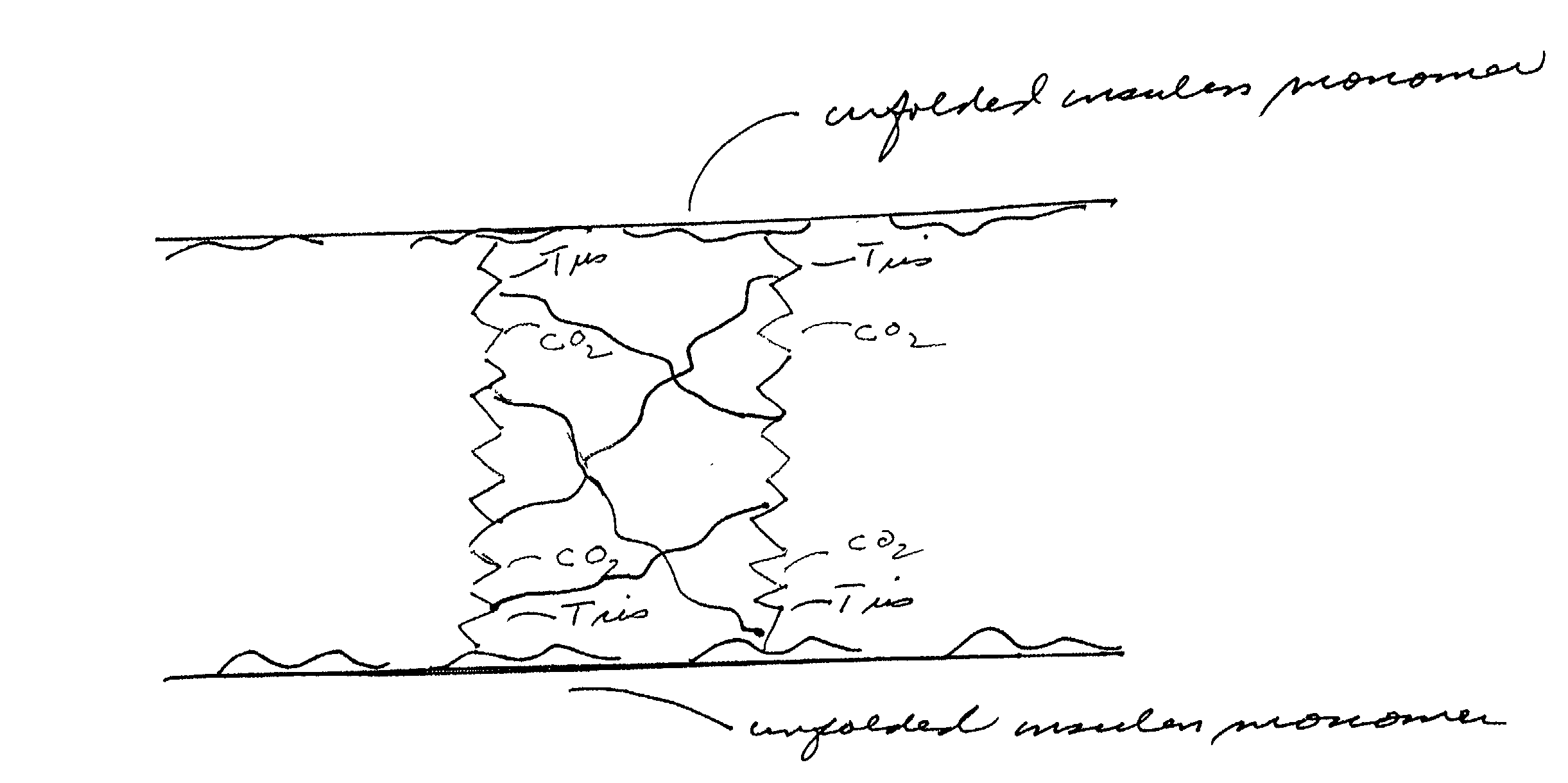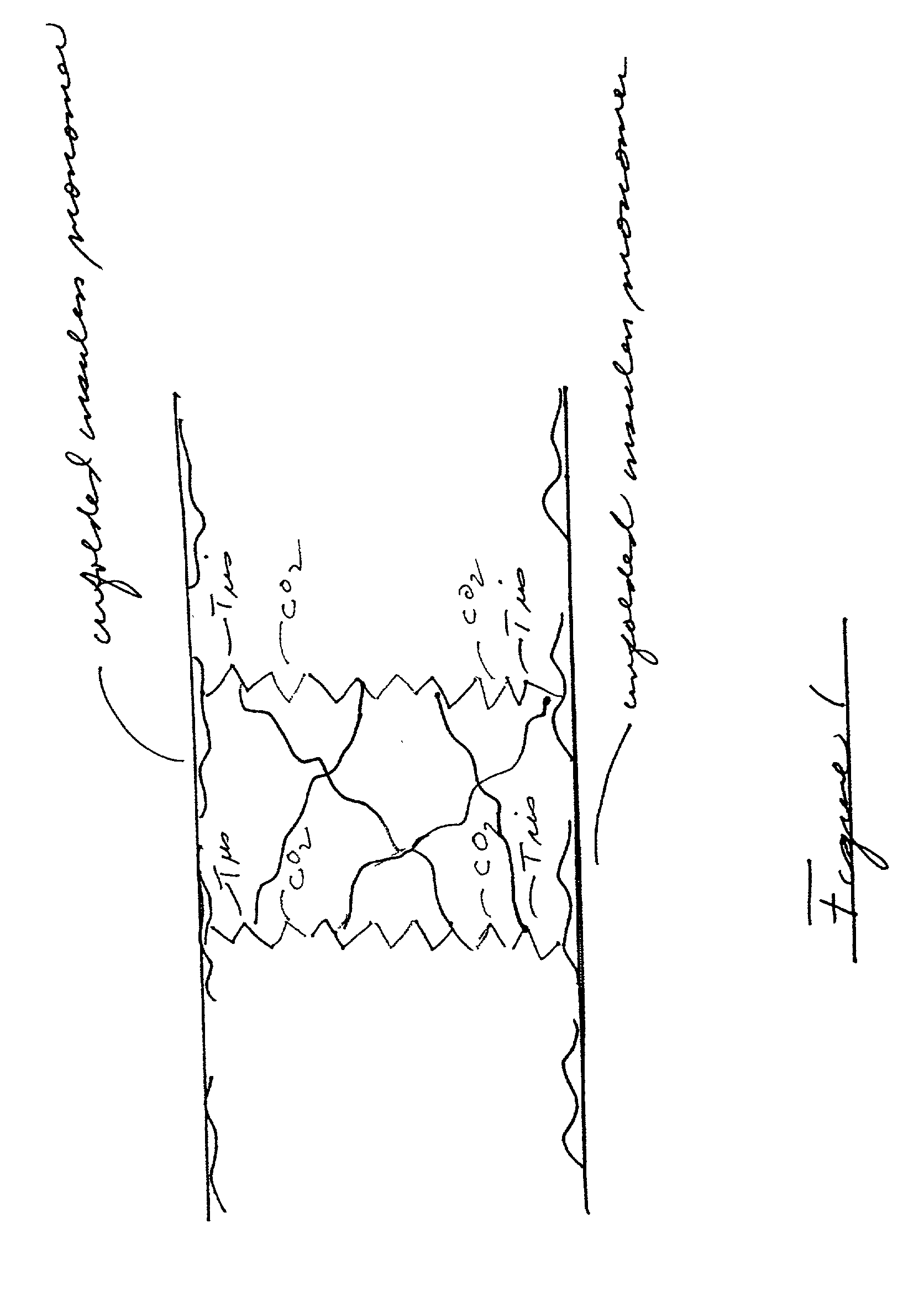Stabilizing catheter for protein drug delivery
a catheter and protein technology, applied in the direction of catheters, packaging foodstuffs, packaged goods, etc., can solve the problems of protein drug being generally not bio-available, protein drug being stuck to the surface, protein drug being unable to be absorbed, etc., to reduce site loss, reduce diffusion, and reduce the effect of denaturation or unfolding of protein drug
- Summary
- Abstract
- Description
- Claims
- Application Information
AI Technical Summary
Benefits of technology
Problems solved by technology
Method used
Image
Examples
example 1
[0117] Experiments were performed to analyze the diffusion of phenol out from various types of implantable catheter tubings and external infusion device tubings. A series of controls were set up where buffer, without phenol, was pumped through various tubing materials. The buffer consisted of 1.6 g / l glycine, 0.6 g / l Tris-HCl and 0.001 g / l Genapol PF10, pH 7.4. A series of phenol standards also were prepared with the following phenol concentrations: 0.7, 1.4, 2.1, 2.8 and 3.5 mg / ml. All standards and samples were read for phenol content at 272 nm. The series of standards yielded a linear relationship between the OD (optical density) at 272 nm and phenol concentration (mg / ml) with a correlation coefficient of 0.9998.
[0118] FIG. 5A shows the change in phenol content over time for a variety of tubing materials. The buffer containing 2.8 mg / ml phenol was used to assay the change in phenol concentration over time. The tubing materials compared were Teflon, polyethylene and MiniMed extern...
example 2
[0120] An experimental protocol was developed to compare the rate of formation of protein occlusions in-vitro and in-vivo as this may relate to the different chemical environments surrounding a delivery catheter. For this comparative experiment, one of the most stable insulin high concentration insulin formulations was used. A high concentration LISPRO insulin formulation consisting of 400 U / ml LISPRO insulin (approximately 15 mg / ml), 16 mg / ml glycerin, 0.9 mg / ml phenol, 2.2 mg / ml m-cresol in a Tris buffer (2.0 mg / ml) at pH 7.6 was prepared for use in both the in-vitro and the in-vivo stability tests.
[0121] The in-vitro evaluation of the stability of this formulation was conducted in a vial vibration test. The vials were made of glass and held 2.0 milliliters of solution. For this test 2.0 ml of the formulation were place in the vials. The vials were vibrated at a rate of 40 hz at 37 deg C. The data from at least a 10 sample run showed that the formulation was stable for at least 10...
example 3
[0123] An in-vivo experiment is performed using the canine model. The experimental protocol is the same as in Example 4, except that a stabilizing catheter can be connected to an infusion system and implanted into the canine. The stabilizing catheter is made of a single layer of Teflon. After two weeks of being implanted in the canine, the stabilizing catheter can be removed and inspected to ascertain whether protein occlusions are formed during the time period.
PUM
| Property | Measurement | Unit |
|---|---|---|
| thickness | aaaaa | aaaaa |
| molecular weight | aaaaa | aaaaa |
| contact angle | aaaaa | aaaaa |
Abstract
Description
Claims
Application Information
 Login to View More
Login to View More - R&D
- Intellectual Property
- Life Sciences
- Materials
- Tech Scout
- Unparalleled Data Quality
- Higher Quality Content
- 60% Fewer Hallucinations
Browse by: Latest US Patents, China's latest patents, Technical Efficacy Thesaurus, Application Domain, Technology Topic, Popular Technical Reports.
© 2025 PatSnap. All rights reserved.Legal|Privacy policy|Modern Slavery Act Transparency Statement|Sitemap|About US| Contact US: help@patsnap.com



